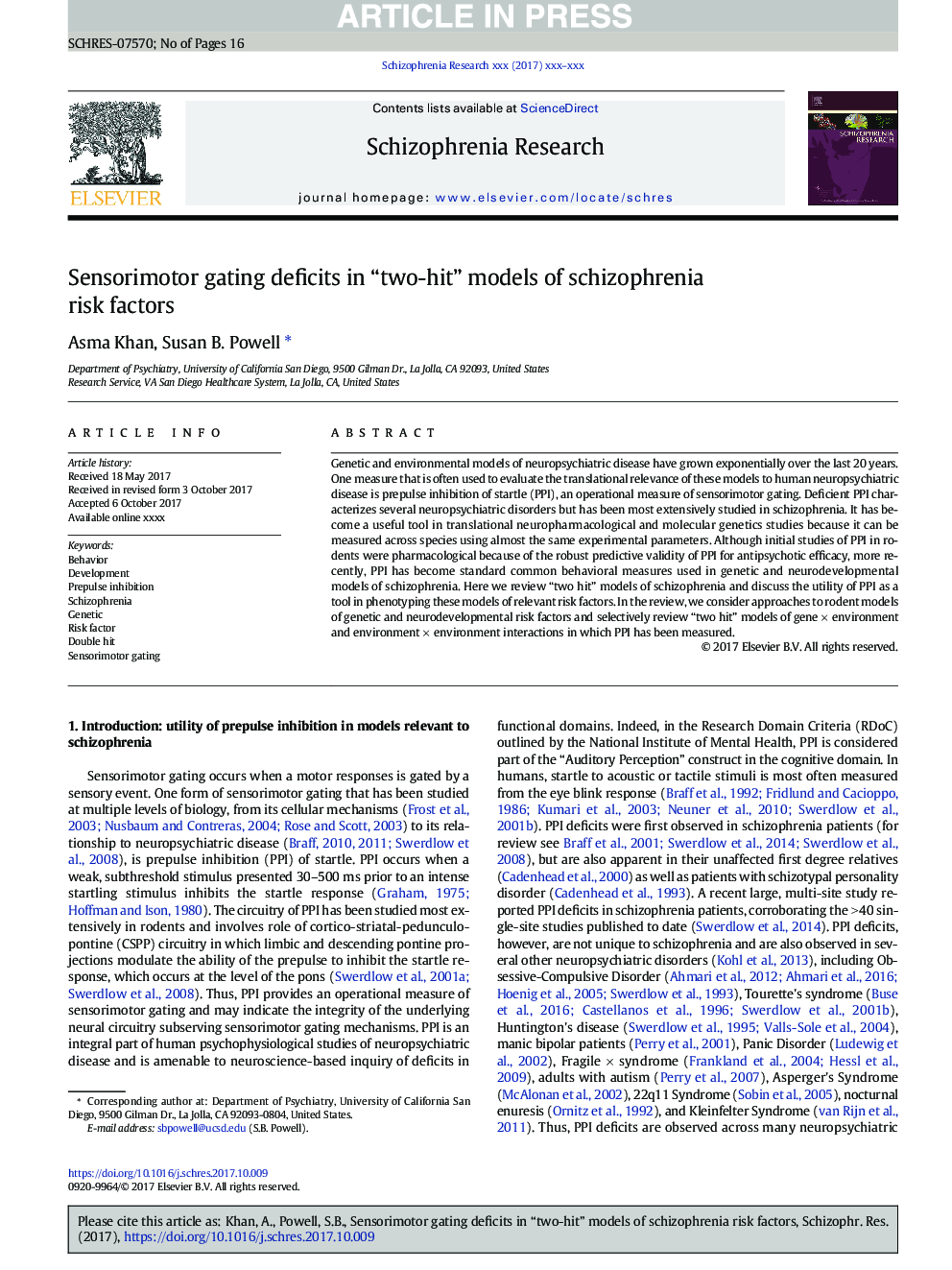| Article ID | Journal | Published Year | Pages | File Type |
|---|---|---|---|---|
| 8941721 | Schizophrenia Research | 2018 | 16 Pages |
Abstract
Genetic and environmental models of neuropsychiatric disease have grown exponentially over the last 20 years. One measure that is often used to evaluate the translational relevance of these models to human neuropsychiatric disease is prepulse inhibition of startle (PPI), an operational measure of sensorimotor gating. Deficient PPI characterizes several neuropsychiatric disorders but has been most extensively studied in schizophrenia. It has become a useful tool in translational neuropharmacological and molecular genetics studies because it can be measured across species using almost the same experimental parameters. Although initial studies of PPI in rodents were pharmacological because of the robust predictive validity of PPI for antipsychotic efficacy, more recently, PPI has become standard common behavioral measures used in genetic and neurodevelopmental models of schizophrenia. Here we review “two hit” models of schizophrenia and discuss the utility of PPI as a tool in phenotyping these models of relevant risk factors. In the review, we consider approaches to rodent models of genetic and neurodevelopmental risk factors and selectively review “two hit” models of gene Ã environment and environment Ã environment interactions in which PPI has been measured.
Keywords
Related Topics
Life Sciences
Neuroscience
Behavioral Neuroscience
Authors
Asma Khan, Susan B. Powell,
